12 December
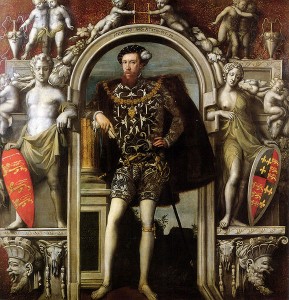
Henry Howard
1546 - Henry Howard, Earl of Surrey was led through the streets of London from Ely Place, where he had been held since the 2nd December, to the Tower of London. There, he was joined by his father, Thomas Howard, 3rd Duke of Norfolk, who was taken to the Tower by barge along the Thames.
1574 – Birth of Anne of Denmark, Queen of England, Scotland, and Ireland as consort of James I, at Skanderborg Castle, Jutland, Denmark. Anne was the second daughter of Frederick II, King of Denmark and Norway, and his wife, Sophia. She married James I, when he was James VI of Scotland, by proxy on 20th August 1589, and in a proper church ceremony on 23rd November 1589. The couple's children included the future Charles I and Elizabeth Stuart, Queen of Bohemia. Anne died on 2nd March 1619 of consumption and dropsy, and was buried in Henry VII's Chapel, Westminster Abbey.
1595 – Death of Sir Roger Williams, Protestant Welsh soldier and author, from a fever with his patron, Robert Devereux, Earl of Essex, at his side. He was buried at St Paul's Cathedral. William served as a soldier in the Low Countries and France, and was second in command to Essex of the cavalry gathered at Tilbury in 1588. He wrote the 1590 “A Briefe Discourse of Warre”.
13 December
1558 – Death of William Clyffe, civil lawyer and one of the authors of the 1537 “Bishops' Book” or “The Godly and Pious Institution of a Christian Man”. Clyffe's expertise on marriage and divorce law led to convocation seeking his advice regarding Henry VIII's Great Matter.
1561 – Death of Lawrence Dalton, Richmond Herald, Rouge Croix Pursuivant and Norroy King of Arms. He was buried at St Dunstan-in-the-West, London.
1577 - Sir Francis Drake finally left Plymouth with his fleet of five ships on a journey which would see him circumnavigating the Globe. Storm damage to two of his ships had scuppered earlier plans. Click here to read more.
14 December

James V and Marie de Guise
1542 - Death of James V at Falkland Palace, Falkland, Fife, and accession of his daughter, Mary, Queen of Scots. James was buried at Holyrood Abbey on 8th January 1543.
1558 – Burial of Queen Mary I at Westminster Abbey in the Henry VII chapel with only stones marking her grave. Click here to read more.
1562 – Death of William Grey, 13th Baron Grey of Wilton and military commander, during the night of 14th/15th December at the home of his son-in-law, Henry Denny, at Cheshunt in Hertfordshire. Grey served as a commander in the expedition to France in 1544, as Field-Marshal and Captain-General of Horse in Scotland in 1547, as a soldier in France in 1557, and as Warden of the Eastern and Middle Marches in 1559.
1563 – Baptism of Thomas Belson, Roman Catholic martyr, at Aston Rowant Church in Oxfordshire. He was hanged on 5th July 1589 for assisting the Catholic priests, George Nichols and Richard Yaxley, who were hanged, drawn and quartered on that day.
1563 – Burial of William Dacre, 3rd Baron Dacre of Gilsland and 7th Baron Greystoke, at Carlisle Cathedral.
1585 – Burial of Thomas Bentley, editor of “The Monument of Matrones: Conteining Seven Severall Lamps of Virginitie, or Distinct Treatises; Whereof the First Five Concerne Praier and Meditation: the Other Two Last, Precepts and Examples” (1582), a collection of prayers and meditations for and by women. It is said to be the first published anthology of English women's writing. Bentley was buried at St Andrew's, Holborn.
1592 – Death of Sir Roger Manwood, judge, member of Parliament and Elizabeth I's Lord Chief Baron of the Exchequer, in St Stephen's Parish, Hackington, near Canterbury.
1593 – Death of Henry Radcliffe, 4th Earl of Sussex, soldier, member of the Irish Privy Council, member of Parliament and patron of the Earl of Sussex's men. He was buried at Borham in Essex.
1595 – Death of Henry Hastings, 3rd Earl of Huntingdon, administrator, diplomat, and military commander, at York. He was buried at St Helen's Church, Ashby-de-la-Zouch. Huntingdon was educated with the young Edward VI, and served in the household of Cardinal Reginald Pole, his great-uncle. He served Elizabeth I as President of the Council of the North, and was one of the peers at the trial of Mary, Queen of Scots in 1586.
1624 – Death of Charles Howard, 2nd Baron Howard of Effingham and 1st Earl of Nottingham, at Haling in Surrey. He was buried at Reigate Church in the family vault. Nottingham served Elizabeth I and James I as Lord High Admiral, and commanded the English forces against the Spanish Armada in 1588.
15 December

Thomas Parry
1558 – Death of James Fleming, 4th Lord Fleming and Lord Chamberlain of Scotland, at Paris. He had been in France as a commissioner representing Scotland at the wedding of Mary, Queen of Scots, and Francis, the dauphin, and was taken ill with other commissioners after they had told the French that they had no authority to grant Francis the crown matrimonial. Fleming and three other commissioners died, and it was suspected that they had been poisoned.
1558 – Funeral of Reginald Pole, Cardinal Pole and Mary I's Archbishop of Canterbury, at Canterbury Cathedral. Click here to read more about it.
1560 – Death of Thomas Parry, Comptroller of the Household to Elizabeth I and Lord Lieutenant of Berkshire. He was buried at Westminster Abbey.
1605 – Death of Sir Francis Gawdy, Judge and Chief Justice of the Common Pleas, of apoplexy at Sergeant's Inn. He had only been Chief Justice for four months. As Queen's Sergeant in 1586, Gawdy had opened the trial against Mary, Queen of Scots. He was buried at Rungton, near Wallington in Norfolk.
16 December
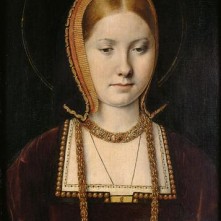
Woman thought to be Catherine of Aragon
1485 (night of 15th/16th) - Catherine of Aragon was born at the recently reformed fortified palace at Alcalá de Henares, a town just east of Madrid. Catherine of Aragon, Catalina de Aragón, was the last of Ferdinand II of Aragon and Isabella I’s children, and was named after her maternal great-grandmother, Catalina of Castile or Catherine of Lancaster. She was the first wife of Henry VIII.
1503 (16th or 18th) – Death of George Grey, 2nd Earl of Kent, at Ampthill, Bedfordshire. He was buried at Warden Abbey, Bedfordshire, where his first wife, Anne Woodville (sister of Elizabeth Woodville), had been laid to rest in 1489. Grey's second wife, Catherine Herbert, daughter of William Herbert, 1st Earl of Pembroke, was also buried there after her death in 1504. Grey was on Henry VII's council, was Constable of Northampton Castle and was a judge at the trial of Edward, Earl of Warwick in 1499.
1558 – Death of Sir Thomas Cheyne (Cheney), diplomat, administrator and Lord Warden of the Cinque Ports, from the “new ague”. He was buried at St John-at-Minster in the Isle of Sheppey.
1570 – Death of Francis Mallett, Dean of Lincoln, at Normanton, Yorkshire. During Edward VI's reign, Mallett was the principal chaplain and almoner of Princess Mary, the future Mary I, and was imprisoned in the Tower of London for celebrating mass at Beaulieu before Mary arrived there. He was made Dean of Lincoln by Mary I, who also made him Lord High Almoner.
1591 – Burial of Sir Christopher Hatton, courtier, politician and favourite of Elizabeth I, at St Paul's Cathedral.
17 December
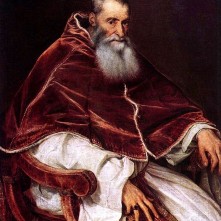
Pope Paul III
1538 – Pope Paul III announced the excommunication of Henry VIII.
1550 – Birth of Henry Cavendish, soldier, traveller and son of Bess of Hardwick and Sir William Cavendish. He was married to Grace Talbot, daughter of George Talbot, 6th Earl of Shrewsbury. This match was arranged by his mother who had married the Earl of Shrewsbury.
1559 – Matthew Parker was consecrated as Elizabeth I's Archbishop of Canterbury. According to “The Correspondence of Matthew Parker”, Anne Boleyn charged him with the care of Elizabeth when she saw him in April 1536, "not six days before her apprehension". Historian Eric Ives writes that this was a request that Parker never forgot, and something which stayed with him for ever. Parker obviously came to be important to Elizabeth, because she made him her Archbishop of Canterbury in 1559. It was a post which Parker admitted to Lord Burghley, he would not have accepted if he “had not been so much bound to the mother”. Parker was Archbishop until his death in 1575.
18 December
1555 – Burning of John Philpott, former Archdeacon of Winchester and Protestant martyr, at Smithfield. He had been imprisoned in London's coalhouse prison after writing letters to fellow Protestants to encourage them to stay strong in their faith. He was moved to the tower of St Paul's Cathedral, where he was put into solitary confinement before being condemned for heresy by Bishop Bonner.
1575 - Nicholas Harpsfield, historian, Catholic apologist, priest and former Archdeacon of Canterbury, died in London. He had been released from Fleet prison four months earlier due to ill health.

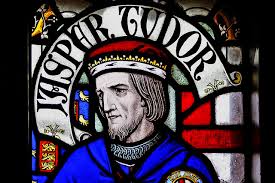
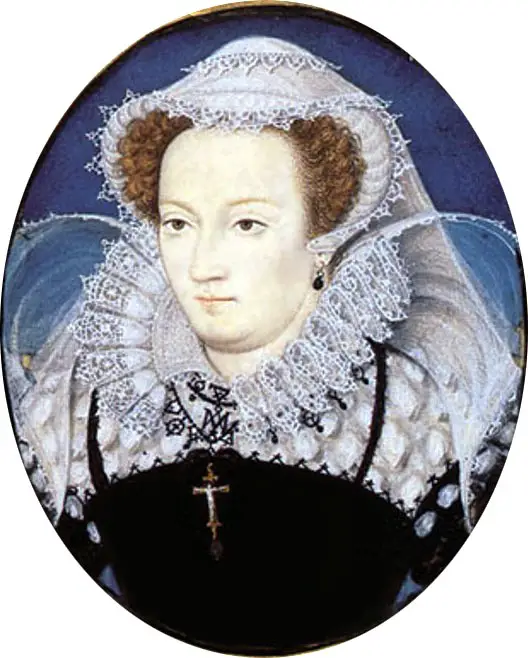
Leave a Reply